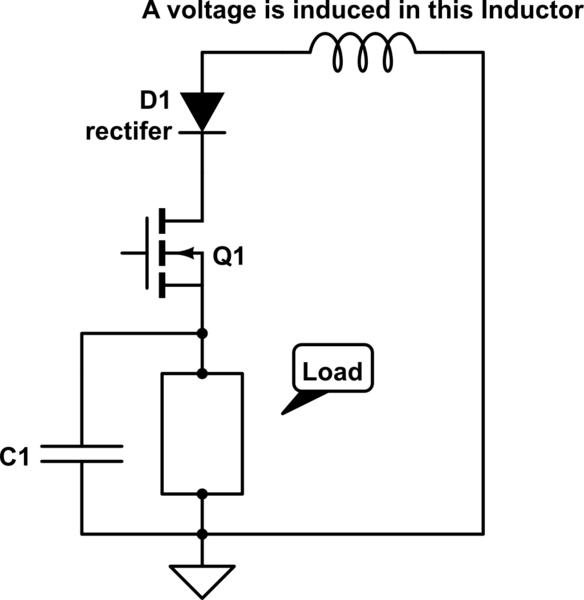Is that top inductor just one winding of a transformer?
In any case: when the mosfet switches off, the current in the inductor is going to (nearly) instantly drop to 0. Since the right side of the inductor is grounded and you have a very large sudden decrease in the right to left current, what you will find happening is the voltage on the left side of the inductor will fly upwards. C1 may ensure that your mosfets source voltage remains the same, so you will be looking at a large voltage appearing across the series combination of your diode and the effective S to D diode inherent to your fet, which appears in the opposite polarity or your existing actual diode. Whether or not this is a problem likely depends on your particular diode and fet, but if it is you could use a unipolar transient voltage suppresion diode (will look effectively like a zener with cathode on inductor diode junction and anode on ground.) to clamp the positive flying voltage to a reasonable level.
How quickly the flyback voltage dissipates depends on the effective resistance (instantaneous V/I) of your tvs diode.
Also note: the energy stored in an inductor is proportional to the (square of the) instantaneous current through it. Thus, once you open the get switch and the current in the inductor drops to 0, the energy stored in your inductor drops accordingly.

